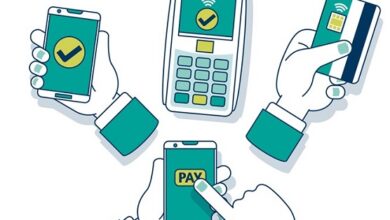What is geolocation its Working Geolocation in apps and advantages
Geolocation
Geolocation is a technology using GPS, GSM or Wi-Fi and allows you to determine the geographic location of a device, and can be used to track external or home office workers.
You are probably familiar with geolocation as the technology that allows the use of a GPS in cell phone applications that plot the best routes to your destination.
In addition to this, there are other ways to use this technology and, in this post, we will talk about how geolocation works to control journeys, tasks and more.
In short, we will present you with an ideal solution to accompany external teams and workers from home office, optimizing people management and bringing benefits to your company.
We assume that maybe you know the geolocation of apps that work like GPS.
However, if this is not the case, we need to introduce the technology to you. So let’s start with the basics.
Geolocation is the exact or approximate identification of the geographic location where an object is .
That’s why, with your smartphone logged into an app like Waze, for example, you get directions from where you are to where you want to go.
We’ve been hitting the GPS key because it’s an easy-to-understand example, but this type of technology also works in other ways and has other functions besides helping someone locate themselves.
Namely, if you are in São Paulo, you may receive different online advertisements than if you were in Belo Horizonte, for example.
Geolocation is one of the factors that help to determine what type of advertising content to present to someone, considering that it makes no sense to advertise a Minas Gerais restaurant to someone who is in the capital of São Paulo, and so on.
With more of this information, it may be even clearer to you what geolocation is or how this technology is part of our lives .
We hope, however, to make you understand the subject even better by explaining how geolocation works.
How geolocation works
Geolocation is a technology that can work through three different methods: the aforementioned GPS, GSM and wi-fi or wireless, names given to the wireless internet network.
1-GPS geolocation
In case you don’t already know, in the Portuguese translation, GPS is an acronym for Geographic Positioning System.
It is a technology that works through satellite transmissions .
Thus, a device with GPS must be used and activated so that a satellite captures the signals and can transmit information about its location.
In general, this requires at least three satellites, and this technology usually works very well, being useful even because it does not require an internet connection .
However, in some cases, it may fail if there is any kind of signal interference.
2-Geolocation by GSM
In turn, GSM is equivalent to the Global System for Mobile Communications, a technology also known as radiofrequency.
Working over radio waves, GSM, like GPS, is a technology that works well over long distances .
The basic difference between the two is that it uses information that is provided by mobile phone operators.
Therefore, even if the GPS is disabled or has a problem, if the device is turned on and has a signal, it is possible to locate it and indicate its geographical position with good precision.
On the other hand, if the device is in a location where there is no signal capture, the location may be impossible. Something common, for example, in underground places.
3-Wi-Fi geolocation
Finally, geolocation can work through wireless internet , even if the GPS is turned off.
In contrast, unlike the other two methods, the effectiveness of Wi-Fi depends on its proximity to a router or signal repeaters.
If the device is outside the limits of the wireless network, it will not be able to transmit geolocation information over Wi-Fi.
Despite this, this solution can be very useful, because it can transmit geolocation information even in closed or very busy places where the GPS and GSM could suffer some interference.
4-Geolocation in apps
GPS devices have existed since before the popularization of devices such as smartphones.
Perhaps you remember seeing taxi drivers who used a GPS attached to their car‘s dashboard, or you have used such a device yourself.
In any case, geolocation is not new, but its use has become more common and almost essential since modern cell phones became popular.
Just so you have an idea and recognize how present this technology is in our lives, let’s go through some examples of applications or situations in which geolocation is used.
5-Google
Cast the first stone who has never searched where to find something, be it a product, a store or a service on Google!
The most famous search engine in the world has become a very useful tool, as it evolves every day to provide more adequate answers to its users.
It is increasingly common, for example, that internet users choose to ask something like “where to find a vegan restaurant near me” .
With geolocation activated on your cell phone, the user no longer needs to specify where this “near me” is.
That’s because the technology of geolocation takes care of doing it and, with that, allows Google to present in the results restaurants that are really close to the person who made the search.
6-Waze, Maps and more
Waze and Maps are examples of geolocation apps that we use to know which routes to take, whether by car, using public transport or walking, to get from one place to another.
The emphasis on the use of geolocation is not linked to the image of a map that appears under the screen.
In fact, it concerns the fact that the presented routes are updated in real time since the app can know exactly where the user is.
So, if in the middle of the route a road is blocked and a detour is made, the application immediately detects this change and updates its guidelines.
7-Uber, Cabify and others
Driver services via the app work very similarly to what we just explained when commenting on geolocation apps.
In general, Uber, Cabify and other alternatives either have their own technology to guide drivers or integrate with one of the aforementioned apps.
In any case, thanks to real-time updates, they are able to warn of congestion and other problems, allowing the driver to choose the most suitable routes.
8-iFood and others
If you’ve ever used iFood or another food delivery service, you know that the app is programmed to identify where the user is and then show a list of restaurants that deliver in your area.
In this case, therefore, geolocation is used to facilitate the delivery service and not frustrate the user — can you imagine discovering, at the time of finalizing the purchase, that your order cannot be delivered due to the distance? It would be a bad experience.
9-racing apps
Also, if you are in the group of those who practice street racing, you must already know about the existence of mobile applications or even gadgets such as smartwatches (smart watches) that have integrated GPS.
The geolocation function, in these cases, is to present an activity report — accompanied by a map — that allows the user to visualize the area covered during the practice.
10-point control apps
To close our list of examples of using geolocation in applications, we have the time tracking solutions .
But, to talk about this application of technology, we have prepared an exclusive topic for you to know it in detail and that you will read soon.
Geolocation authorization
Even if you’re new to mobile point apps with geolocation, if you’ve used any of the other solutions we’ve listed as an example, you know that you may need to grant authorization for location information to be shared .
In case you’ve never experienced this, though, you might be wondering how to authorize geolocation, and basically, there are two ways to do that:
- as soon as the application is installed and opened for use, in addition to registering (when necessary), the user also needs to “OK” in access requests that the software asks for.One of these requests concerns geolocation, and if authorization is denied, the function will not work;
- in the mobile device settings, usually under “privacy”, there are also settings related to location services.By accessing this section, the user authorizes which apps can have access to their location and when. Uber, for example, does not need to have access to this information all the time, and it can be marked as “while in use”.
On the other hand, at least during the work routine, it is important that the geolocation point application has access to this information at all times .
If your company adopts a time and attendance solution that works by geolocation, it is important to educate employees about this authorization.
It may even be necessary to create a manual or add guidelines to the company’s rules explaining how to use the solution and how to do geolocation so that journey control is made possible.
How to take advantage of technology in people management
We look for examples of how geolocation is part of our daily lives so that you understand that using this technology in mobile time control is as simple as using all the other apps we mentioned.
With that in mind, we are going to tell you how geolocation can be used in people management and what are the advantages linked to all this. Follow up!
1-Check Point
To talk about the usefulness of geolocation in timesheet control, let’s first think about the existence of an external team in your company, a very common scenario for those who work with sales.
Can you imagine if, to control the employees’ journey, your company needed to establish that they all need to go to the headquarters to clock in at the beginning of the workday, when going to and from lunch and at the end of the workday? It is counterproductive and has a good chance of going wrong.
Now, imagine how practical it would be if your external team could clock in from wherever they were? With geolocation in mobile point apps this is possible.
Once the time tracking app is installed on each employee’s mobile device, whether it’s a smartphone or a tablet, appointments can be made remotely .
2-Control of external activities
In addition to what has been said about clocking, geolocation at the mobile point also favors task control .
No waiting until the end of the day or a predetermined cycle to only then receive a report on the working days of each employee!
With the right solution, a company’s managers and HR can know where each employee was when they recorded their journey .
With this, if one of the salespeople on the team should be talking to a business partner X in the first hour of their workday, it is possible to verify that the employee, in fact, has been where partner X is.
This is one of the possible ways to optimize task control and verify that visits are being made according to the determined schedule.
3-task control
Continuing with the reality of external teams as a basis, if managers are able to monitor in real time where each one is, they are also able to communicate changes in the list of tasks to be accomplished.
If any unforeseen or urgent demand arises, the manager is able to reorganize the agenda of the external team considering the place where each one is at the moment as a starting point .
Thus, it becomes possible to take better advantage of the mobility of each employee whenever necessary. Something that contributes to the optimization of the company’s time and resources.
Also, if any member of the external team makes a mistake and forgets a task or visit, for example, with the geolocator active, the manager can identify the location and provide guidance to correct it.
4-clear communication
With all this, communication between external teams or home office workers and their managers improves.
Knowing that they are being monitored, employees understand that there is more transparency in the relationship between the parties and they are more clear and honest about their work.
Let’s face it, it’s no use for an external salesperson to say he’s on client X if, through the locator, the manager can see that this isn’t true, right?
With this, unforeseen events, delays and other problems are better communicated.
As a result, the manager is better able to assess recurring situations and promote strategic changes that favor the professional’s performance and, of course, the company’s results.
5-productivity achievement
Since it allows a better alignment of schedules, activities and tasks, the mobile point with geolocation also allows a more adequate planning of work to be done .
With a better defined routine and properly aligned goals, employees can have productivity gains .
Something that is positive for them and, as it should be, for the company.
Considering the situation of employees working from home, technology also allows their working time to be evaluated, aiming at alignments that favor productivity gains in remote work .
6-reduced costs
Also, geolocation favors cost reduction. If, for some reason, the external worker created routes that are not strategic or that result in detours and more kilometers traveled, with the mobile point application the company can study the route taken and propose changes.
Geolocation as a tool in the home office
Now that we’ve already talked about geolocation considering the reality of external teams, let’s go to another scenario that is increasingly common in our country: remote work done from home.
Even before covid-19, the home office was already growing in Brazil. With social distancing, the number of professionals working from home has increased and many employers have expressed their intention to maintain this type of work regardless of the pandemic.
One of the conclusions pointed out is that the home office should grow 30% even with the end of the atypical scenario caused by the new coronavirus .
Research coordinator André Miceli highlights that the adoption of the modality is “a path of no return”.
With that, we don’t even need to give so much attention to external teams to talk about the usefulness of time tracking by geolocation.
Whether employees are in their homes or doing errands outside , it’s natural for the employer to want to know where everyone is to make sure they’re working.
For this, the technology used in the mobile point is applied.
Just rely on a time attendance application equipped with some geolocation technology to know, wherever you are, where each employee is .
Workday control in the home office
Even before the Labor Reform, Law nº 13.467 of 2017, the legislation did not mention the home office.
This has changed and, since then, it is Article 62 of the CLT that determines that remote workers do not need to clock in, but nothing prevents the company from adopting a journey control system .
To this end, the recommendation is that a documented agreement be made to establish, between the parties, the understanding that the time control will exist even in the home office.
Something that is only possible with the use of an alternative time control system, such as a mobile application.
In the home office work contract , two of the points that the employer needs to make clear are the expected productivity of the employee and how the journey control will be carried out. These are points that may even be interconnected.
With a mobile point application, the company becomes more aware of how much time the employee is dedicating to work and how that time is being used .
This is because it is possible to relate this data to the fulfillment of tasks to then assess the pace of work and the productivity of each one.
In short, even though the requirement does not exist, companies that opt for a time tracking system with geolocation are able to better manage their employees.
Something that implies better results and can also be beneficial for workers who have difficulty managing their working hours on their own.




